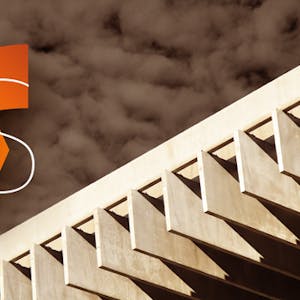L'Art des Structures 2: trellises, beams, slabs, and frames are fundamental in modern construction, from buildings and bridges to energy and telecommunication infrastructure. This course introduces the workings and foundational principles of dimensioning these structures using graphic statics, minimizing complex mathematics while determining structural efforts. Upon completion, you'll identify and pre-dimension various structures and compare their effectiveness.
Certificate Available ✔
Get Started / More Info
L'Art des Structures 2 offers comprehensive modules covering trellises, beams, slabs, and frames. Gain expertise in structural analysis and design for modern construction.
Module 1 introduces trellises and forces at supports, providing a foundational understanding of structural forces and their application in trellis systems. The course covers trellises at 4 nodes, labile, isostatic, and hyperstatic systems, and conventions for the course.
Module 2 delves into trellises with 5, 7, and 9 nodes, expanding upon the principles introduced in the previous module. This section covers the analysis of trellises at varying nodes, including exercises to apply and reinforce the concepts learned.
Module 3 focuses on specific analysis and typology of trellises, exploring maximal efforts, sign of efforts, and the typology of trellises with constant and variable heights. This module also covers triangular and trapezoidal trellises.
Module 4 discusses towers, consoles, and tridimensional trellises, offering insights into the application of trellis structures in various architectural elements and configurations. Exercises include analyzing the iconic Tour Eiffel and three-dimensional trellises.
Module 5 comprises a series of graded exercises to reinforce the understanding and application of trellis and beam concepts learned throughout the course.
Module 6 provides an introduction to beams, covering trellises within beams, simple beams, and consoles. The section delves into the principles of flexion, resistance, and the analysis of efforts, stresses, and deformations in beams.
Module 7 explores beam sections and pre-dimensioning, including the influence of the section and pre-dimensioning with practical applications for steel and reinforced concrete beams.
Module 8 delves into trellises and beams with consoles, covering trellises with consoles, the principle of superposition, and Gerber beams. The module also addresses the analysis of beams with consoles and Poutres Gerber.
Module 9 provides insights into continuous beams and walls, including superimposed walls and steel walls, offering a comprehensive understanding of beam and wall configurations and their application in construction.
Module 10 covers beam grids and slabs, exploring the design and pre-dimensioning of floors, beam grids, and different types of slabs on linear and punctual beams, providing practical exercises for application.
Module 11 introduces frames and Vierendeel beams, focusing on the transition from arches to frames, articulations, and analyzing horizontal charges in frames. The section also covers Vierendeel vertical beams.
Module 12 addresses the stability of structural elements, including the stabilization of compressed bars, stability conditions, and structural solutions, providing a comprehensive understanding of stability in construction.
Module 13 encompasses a series of graded exercises to reinforce the understanding and application of concepts learned throughout the course, offering practical application and assessment of knowledge gained.
This course provides a rigorous treatment of spatial motion and the dynamics of rigid bodies, employing representations from modern screw theory and the product...
Welcome to “Engineering and Product Design Processes!” This short course will familiarize you with the steps, goals, and differences between engineering and...
Quantum Mechanics provides an introduction to the Schrödinger wave equation, atomic and molecular structural behavior, and modern quantum chemistry numerical solution...
Modelling and simulation of mechanical systems provides a comprehensive understanding of mechatronic systems, mathematical modeling, and simulation techniques using...